בפרויקט הזה תראו איך להטמיע מודל חלק מ-Glassware שמדגים את הפונקציונליות העיקרית של Google Mirror API.
כדי לראות הדגמה תקינה של הפרויקט להתחלה מהירה, צריך לעבור אל https://glass-python-starter-demo.appspot.com. אם לא, כדאי להמשיך לקרוא כדי ללמוד איך לפרוס גרסה משלכם.
דרישות מוקדמות
The App Engine SDK for Python – הפרויקט של Python להתחלה מהירה מוטמע באמצעות App Engine. צריך את Python App Engine SDK כדי לפתח ולפרוס את הפרויקט. צריך להריץ את מנהל ההתקנה אם זה מתאים לפלטפורמה שלכם, או לחלץ את קובץ ה-ZIP במקום נוח.
יצירת מופע של Google App Engine
צריך לארח את פרויקט ההתחלה המהירה במופע של Google App Engine:
- עוברים אל http://appspot.com.
- לוחצים על Create Application (יצירת אפליקציה) ויוצרים מופע ציבורי של Google App Engine שמתארח ב-
appspot.com. - נותנים לאפליקציה מזהה אפליקציה ומשאירים את הגדרת האימות פתוחה לכל Google משתמשים בחשבונות. יהיה צורך במזהה האפליקציה בשלב מאוחר יותר כדי להגדיר את הפרויקט להתחלה מהירה.
יצירת פרויקט במסוף Google APIs
לאחר מכן, מאפשרים גישה ל-Google Mirror API:
- נכנסים אל מסוף Google APIs ויוצרים פרויקט API חדש.
- לוחצים על שירותים ומפעילים את Google Mirror API בפרויקט החדש.
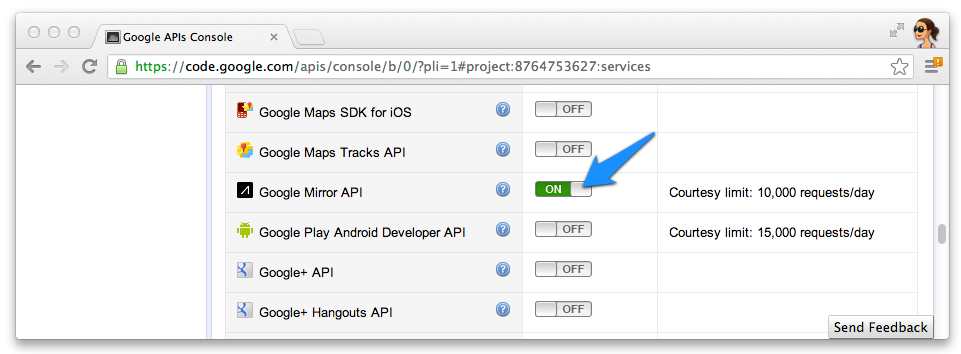
- לוחצים על API Access (גישה ל-API) ויוצרים מזהה לקוח ב-OAuth 2.0 לאפליקציית אינטרנט.
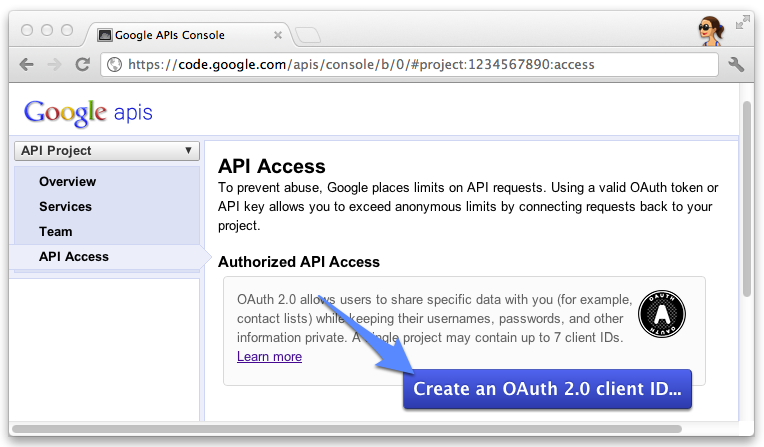
- יש לציין את השם והסמל של המוצר Glassware. השדות האלה מופיעים בבקשת ה-OAuth
של המסך שמוצג למשתמשים.
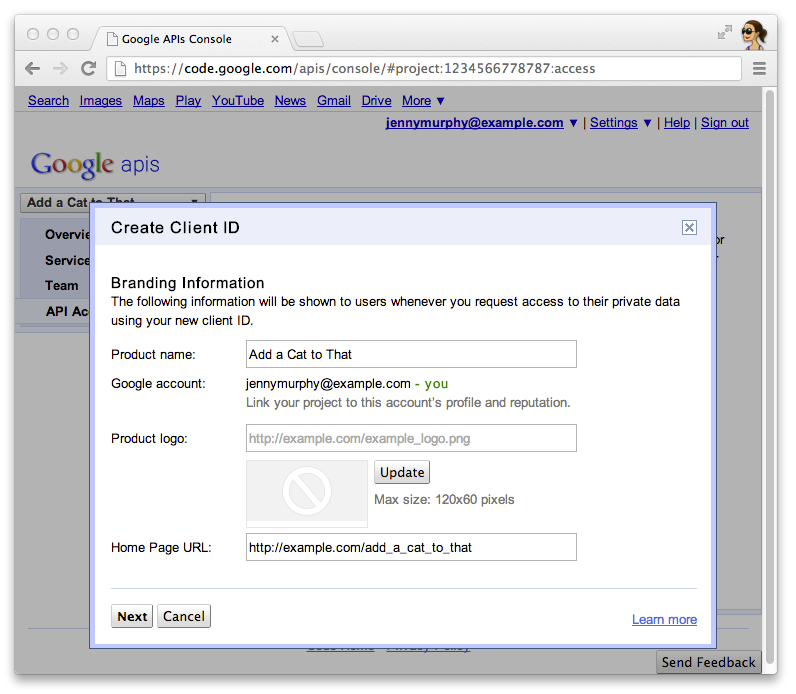
- בוחרים באפשרות Web application ומציינים ערך כלשהו עבור שם המארח, למשל
localhost.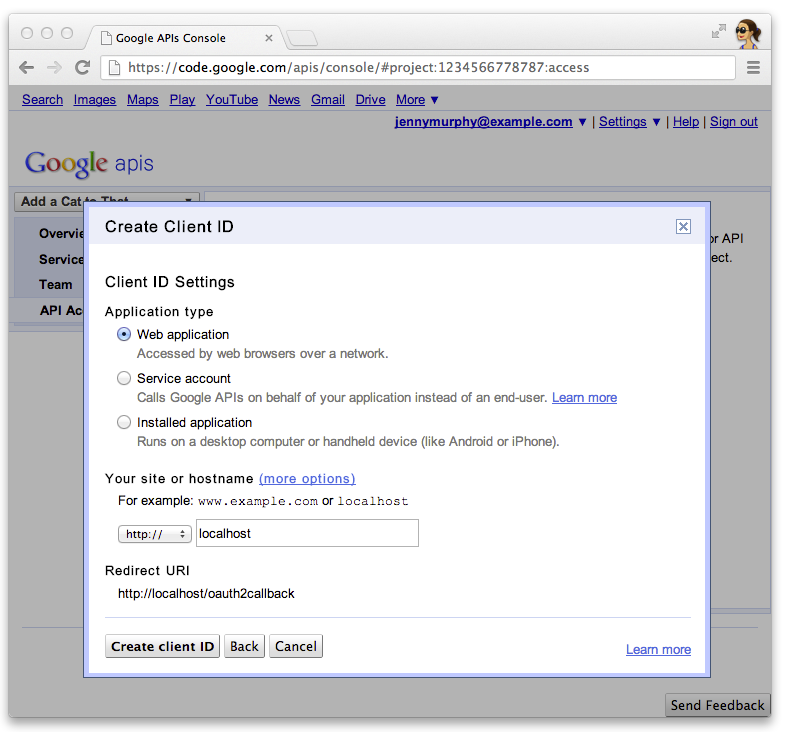
- כדי לציין מזהי URI להפניה אוטומטית, לוחצים על עריכת הגדרות... עבור מזהה הלקוח. יש לפרט
http://localhost:8080/oauth2callbackוכתובת ה-URL לקריאה חוזרת (callback) של App Engine למשל,https://myappengineinstance.appspot.com/oauth2callback.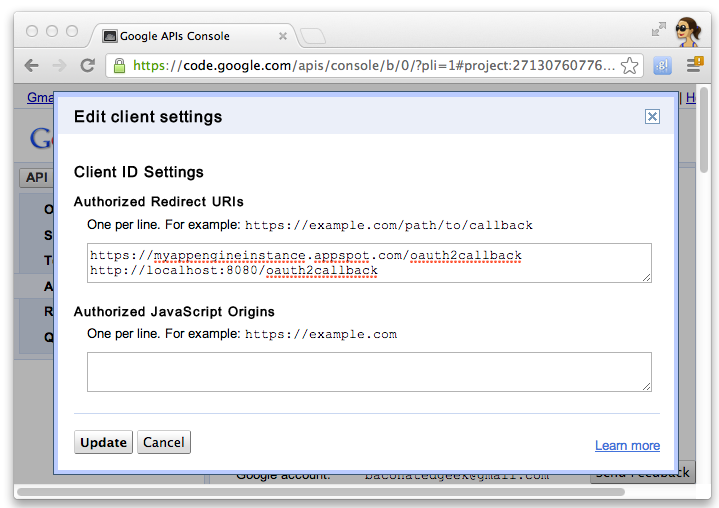
- מומלץ לרשום את מזהה הלקוח ואת הסוד ב-Google APIs Console. יש צורך
כדי להגדיר את הפרויקט להתחלה מהירה.
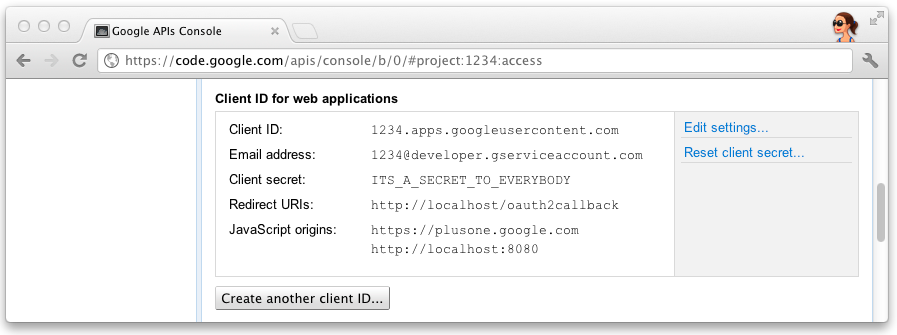
הגדרת הפרויקט
מגדירים בפרויקט 'התחלה מהירה' שימוש בפרטי לקוח ה-API:
- צריך להזין את מזהה הלקוח והסוד ב-
client_secrets.json:{ "web": { "client_id": "1234.apps.googleusercontent.com", "client_secret": "ITS_A_SECRET_TO_EVERYBODY", "redirect_uris": [ ], "auth_uri": "https://accounts.google.com/o/oauth2/auth", "token_uri": "https://accounts.google.com/o/oauth2/token" } }
- יוצרים קובץ
session.secretלשמירת קובצי Cookie של סשן:$ python -c "import os; print os.urandom(64)" > session.secret
- עורכים את
app.yamlכדי להזין את מזהה האפליקציה של App Engine:application: your_app_engine_application_id version: 1 runtime: python27 api_version: 1 threadsafe: true ...
פריסת הפרויקט
לוחצים על הלחצן הכחול Deploy (פריסה) בממשק ה-GUI של App Engine Launch או מפעילים את המעטפת הזו. כדי לפרוס את הקוד:
$ appcfg.py --oauth2 update .

